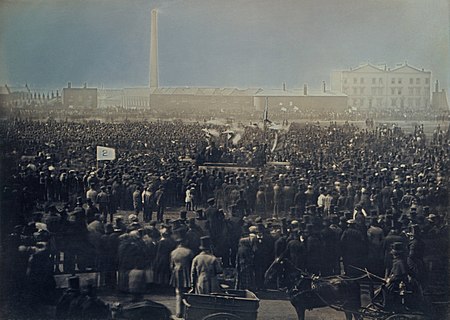
I went into the first Covid-19 lockdown in March with three doorstep sized volumes to keep me going.
The 912 pages of Hilary Mantel’s Mirror and the Light were riveting, even if I knew from the outset that Thomas Cromwell’s career would come to an abrupt end at Tower Hill in 1540. The 1088 pages of David Abulafia’s magisterial The Boundless Sea kept me entertained as it opened my eyes, chapter by chapter, to the way that different parts of the world became progressively connected by maritime exploration, communication and trade.
I had started turning the 1041 pages of Thomas Piketty’s Capital and Ideology before restrictions started to be lifted in May but, despite finding some stimulating ideas in his opening account of the different sources of power of different parts of premodern society (which he describes as ternary or trifunctional, and have echoes in the Escondido Framework’s account of the three currencies or sanctions), it was not until the re-imposition of lockdown (the UK government’s Tier 4 restrictions) that I finally completed it.
I admire much of what Piketty has done in Capital and Ideology. His effort to document the movements in the shares of income and wealth between different groups in different societies throughout human history, and particularly the past century or so, is admirable and revealing. It is possible to challenge some of his assumptions and definitions, but the picture he paints of the direction of the trends in material inequality are compelling. I agree with his spin on Rawls’s maximin principle: “To the extent that income and wealth inequalities are the result of different aspirations and distinct life choices or permit improvement in the standards of living and expansion of the opportunities available to the disadvantaged, they may be considered just.” (p.968). His chapters on the increasing support of the “Brahmin” classes educated to degree level for parties of the left and the corresponding “Nativist” alignment of parties of the traditional right and “left-behind” communities are persuasive. But the book is far longer than it needs to be, many of its graphs add little, and he strays from the professorial scholarship of the economist/social scientist-turned-historian into an undergraduate level of prescription.
Piketty’s underlying thesis is that “no human society can live without an ideology can live without an ideology to make sense of its inequalities.” I didn’t need to read 1041 pages to recognise this: growing up in a churchgoing family, I remember singing the third verse of “All Things Bright and Beautiful”
The rich man in his castle,
The poor man at his gate,
God made them, high and lowly,
And ordered their estate.
These days, it is generally omitted!
It may or not be a coincidence that Mrs Cecil F Alexander wrote these words in 1848, the “Year of Revolutions”, in which Marx and Engels also wrote The Communist Manifesto. Piketty chooses to reformulate the opening words of its first chapter “The history of all hitherto existing society is the history of class struggles” as “The history of all hitherto existing society is the history of the struggle of ideologies and the quest for justice.”
There is something in Piketty’s thesis about the relationship between the ideas that prevail at any point in time and the organisation of society and its impact on the distribution of wealth and income. It may be that I started out as a historian whereas has come to history by way of economics, but I find that he oversimplifies to sustain his argument. Ideas ebb and flow and they can influence behaviours, but this is not the same thing as saying that they determine behaviours. He falls into the trap of assuming that the behaviours that are generally ascribed to “capitalism” are the product of the past few centuries.
He frequently quotes Karl Polanyi with approval, who was even more blinkered in this respect, regarding capitalism as an entirely modern phenomenon. Peter Acton has undermined Moses Finlay’s thesis that the ancient economy was shaped by considerations of status and civic ideology rather than rational economic considerations, demonstrating in Poiesis: Manufacturing in Classical Athens demonstrates that the commercial decisions of Athenians “were for the most part…consistent with today’s understanding of good (rational, profit-maximising) business practice[1]. It does not require a 21st century reading of the biblical parable of the talents to see that the notion of investing for a return was established by the time the Christian gospels were written. And Abulafia’s The Boundless Sea, contains plenty of evidence for the commercial underpinning of the development of maritime trade over many centuries. One of the primary shortcomings in Polanyi’s approach was that set very specific conditions around anything that he would define as a market and, by framing his argument in this way, created a platform for his dismissal of the longstanding heritage of commercial activity. It is as though Polanyi, and to a lesser extent Piketty, seek to dismiss market mechanisms and their place in human societies on the basis that, prior to Adam Smith and his successor, the conditions assumed in classical economics had neither been articulated nor did they prevail.
Essentially, it is not that Piketty is wrong, but his case is overstated and needs reframing. It is not that ideology determines the form of economic organisation, but it helps shape relationship between the parties. In Escondido Framework terms, the prevailing ideological frameworks will influence the attitudes and trade-offs made by parties in their relationships with each other at market interfaces. For example, a religious ordained prohibition on usury does not undermine the human behavioural drivers for gratification today over gratification tomorrow and discounting for risk (although these can be culturally influenced), but historically has resulted in work-arounds (eg Islamic finance) or lending being undertaken by a community less constrained by the prohibition. Certain activities, as in caste based societies, may be undertaken by tightly defined social groups, with implications for the commercial terms on which these activities take place. But this is not the preserve of caste societies: while the boundaries may be less clearly defined and not religiously ordained, even in contemporary society there is an intergenerational stickiness in occupations and values, traditions and attitudes acquired in childhood shape occupational choices and behaviours.
So, two cheers for Picketty for the underlying thesis. And, in due recognition of his own disclaimer in his concluding chapters, he has set out to provoke further debate and provide the foundation for further scholarship rather than provide the definitive answer
However, where I find Capital and Ideology most flawed in when Piketty moves from diagnosis to prescription. In particular, his leap from describing to the increasing inequality in economic outcome for the richest few percent compared to the poorer mass of the population to concluding that all would be solved by appointing worker representatives to corporate boards highlights the danger of straying too far from your own area of expertise.
The inequality that Piketty documents arises from the endowments that we start out with in life (geography, genetics, family wealth, upbringing, education) and our life choices and chances (too many possibilities to enumerate). These will shape whether we end up with investable wealth (the impact of this on equality is thoroughly documented in his earlier work: Capital in the 21st Century) and whether we end up in positions in which we have market power and are able to extract economic rent, which has arisen most egregiously in recent years for executive directors of large companies as a result of shortcomings in corporate governance. Addressing inequality arising from our endowments needs primarily to be by “levelling up” in terms of investment in education and social support, particularly in early years, and widening opportunities, but in relation to inherited wealth is a proper area for taxation. Addressing inequality arising from investable wealth is also clearly an issue for taxation and also needs international solutions, but is a complex matter not least because of the risk of creating perverse incentives and unintended outcomes. Taxation has its place in addressing inequalities in income, but as with addressing issues surrounding taxation of wealth and wealth transfer, is also fraught with difficulty. Piketty raises these issues quite correctly.
But addressing inequality arising from market power and the ability to extract economic rent is a proper matter for better corporate governance and regulation to address market failure. Piketty fails to recognise the role of market failure and consequently the need to address this, and also the problem of the increasing ability of corporate management (and some of the services that support them), to extract economic rent (ironically, at least in part, at the expense of the owners of investible wealth), and that this is purpose behind the need for reform of corporate governance. His own prescription, worker representation on boards, is not the solution for reasons that I have argued elsewhere. Rather, and this comes back to his underlying thesis around ideology, there is a need to widen the understanding about the proper purpose of the company (the core of the Escondido Framework), and an improved understanding of the role of boards in serving them.
[1] Acton P (2014) Poiesis: Manufacturing in Classical Athens. New York: Oxford University Press
